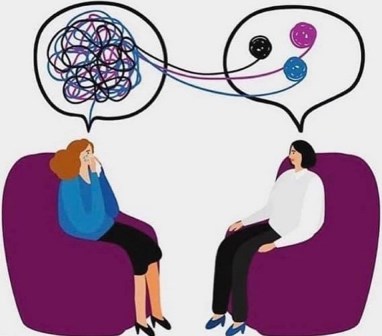It is not easy to discover a commonly acceptable definition of stress. Lots of people have their own distinctive ways of defining stress. But stress can be defined as the response of the body to situations which pose demand, constraints or chances. Typically, it results from interactions between persons and their own environment which are understood as straining or exceeding their own adaptive capacities and threatening their well-being.
Best Definition of Stress by Different Psychologists
Here are some best definitions of stress by different psychologists:
- Psychologists have already viewed the concept of stress in some different ways. The first study of stress was in the year of 1950, where Hans Selye defined stress as the non-specific response of the body to any demand. The term stress had never been related to human behavior until Hans Selye suggested using it to describe what had happened when an organism was exposed to an unpleasant stimulus. Hans Selye was able to separate the physical effects of stress from other physical symptoms suffered by the patients through his research. Hans Selye observed that the patients suffered physical effects not caused directly by their disease or by their medical condition.
- Lazarus and Folkman defined stress as a pattern of negative physiological responses happening in situations where people find threats to their well-being that they may be unable to meet.
- Roz Brody, R and D Dwyer defined stress as a state of physiological and physical tension produced, when there is a mismatch between the perceived demands of a situation and the individual’s perceived ability to cope. The consequent state of tension may be adaptive or maladaptive.
Physiological Perspective of Stress & Illness

Hans Seyle conducted a physiological approach to research more into stress from the early 1930’s until 1982. Through Hans Seyle, the term stress became popular. What Hans Selye did in his research was that he observed animals, a process which they went through a prolonged stressor regardless of what the stressor was. In the year of 1936, Hans Seyle published his first article on the effects of stress reporting an experiment with rats. Hans Seyle exposed rats’ harmful agents including surgical, injury, cold, excessive exercise and severing the spinal cord. The same symptoms were exposed in reaction to all of the stimuli; thus, they were all subjected to the state of what he called stress.
Hans Seyle argued that stress was able to be really adaptive in the short term. Hans Seyle believed this because it gives us the chance to cope with environmental demands. Also, Hans Seyle adopted a pattern named the General Adaptation System (GAS) because notice that the rats and patients all seemed to point to a similar pattern of bodily response. The pattern represented the body’s attempt to solve stress in an adaptive way. For your information, the General Adaptation System (GAS) consists of three stages.
Here are three stages of General Adaptation System (GAS):
- Alarm Reaction Stage
This alarm reaction stage consists of an increased activity in the sympathetic adrenal medullary system and the hypothalamic pituitary-adrenocortical axis (HPA). Hans Seyle argued that the alarm reaction will develop 6-48 hours after stress, and involves loss of a person’s muscular tone, their drop in muscular temperature, and also decrease in size of the spleen and liver.
- Resistance Stage
This resistance stage involves an activity in the HPA. This is when the body is adapting with the demands of the environment. When this resistance stage proceeds, the parasympathetic nervous system will need more careful use of the body’s resources to cope. Finally, the resistance stage is marked by an increase in the size of the adrenal glands and also a decrease in some pituitary activity, such as the growth hormone production. But the body returns to a near-normal state if the stress is not too big.
- Exhaustion Stage
The physiological systems utilized in the previous two stages become less effective when stress becomes too prolonged. Early stages of the autonomic nervous system symptoms of arousal reappear. In several cases, the damaged adrenal cortex will lead to failure of the parasympathetic system collapse of the body’s immune system. Several stress related diseases, that includes asthma, high-blood pressure, and heart disease, become more likely.
The Effects of Stress from the Physiological Perspective of Psychology
Over these years, stress has been associated with lots of illnesses, ranging from headaches (Gannon, 1987) and asthma (Miller, 1979), to colds (Stone, 1987), stomach ulcers (Brady, 1958) and cancer (Jacobs, 1980). This was able to be due to:
- Reduced Resistance to Infection
Research on animals and humans have shown that stress mainly in the long-term will be able to adversely affect the immune system because corticosteroids suppress its activity. Thus, it will increase vulnerability to infection. Cohen (1993) found that the participants infected with a cold virus were more likely to develop colds if they had experienced higher levels of stress. This finding was supported by Segerstrom and Miller’s meta- analysis of nearly 800 studies on stress and the immune system that indicated long-term stress has been consistently shown to suppress human immune systems.
- Heart & Circulatory Disorders
Stress -triggered increases in blood pressure and heart rate, as well as levels of glucose and fatty acids released into the bloodstream will be able to result in the deterioration and blocking of blood vessels, and thus will increase cardiovascular disorder.
- Stress-Induced Negative Affect & Behavior
Also, stress can cause an illness indirectly because it leads to unhealthy emotions and behavior such as drinking, smoking and lack of exercise.
The Effects of Stress from the Cognitive and Behavioral Perspectives
- Anger and Frustration
Stress can cause a vicious circle of stress production because they contribute to a more stressful environment.
- Depression and Helplessness
Seligman discovered continual and avoidable stress caused helplessness and depression, that would be generalized inappropriately to different situations.
Need to note that anxiety-different types of stressful situations will produce different types of anxiety disorder. For example: irresolvable stress that can lead to generalized anxiety disorder, whereas traumatic events can cause posttraumatic events.

A bookworm and researcher especially related to law and citizenship education. I spend time every day in front of the internet and the campus library.





